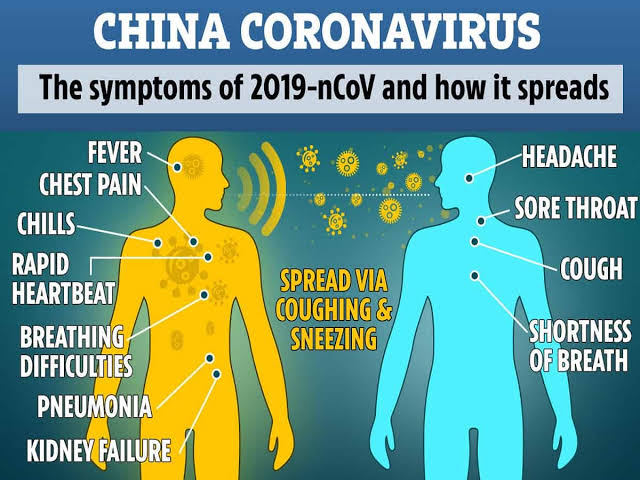What is Bipolar Disorder? You Need to Know About Bipolar Disorder
What is Bipolar Disorder? You Need to Know About Bipolar Disorder
Bipolar disorder is a mental illness marked by extreme changes in mood from high to low, and from low to high. Highs are periods of mania, while lows are periods of depression. The changes in mood may even become mixed, so you might feel elated and depressed at the same time.
Bipolar disorder isn’t a rare diagnosis. A 2005 study found that 2.6 percent Trusted Source of the U.S. population, or more than 5 million people, are living with some form of bipolar disorder. Symptoms tend to appear in a person’s late teens or early adult years, but they can occur in children as well. Women are more likely to receive bipolar diagnoses than men, though the reason for this remains unclear.
Bipolar disorder can be hard to diagnose, but there are signs or symptoms that you can look for.
What are the signs of bipolar disorder?
The signs and symptoms of bipolar disorder are varied. Many of these symptoms can also be caused by other conditions, making this condition hard to diagnose.
The signs of bipolar disorder can generally be divided into those for mania, and those for depression.
7 signs of mania
Mania can cause other symptoms as well, but seven of the key signs of this phase of bipolar disorder are:
feeling overly happy or “high” for long periods of time
having a decreased need for sleep
talking very fast, often with racing thoughts
feeling extremely restless or impulsive
becoming easily distracted
having overconfidence in your abilities
engaging in risky behaviour, such as having impulsive sex, gambling with life savings, or going on big spending sprees
7 signs of depression
Like mania, depression can cause other symptoms as well, but here are seven of the key signs of depression from bipolar disorder:
feeling sad or hopeless for long periods of time
withdrawing from friends and family
losing interest in activities that you once enjoyed
having a significant change in appetite
feeling severe fatigue or lack of energy
having problems with memory, concentration, and decision making
thinking about or attempting suicide, or having a preoccupation with death
Suicide prevention
If you think someone is at immediate risk of self-harm or hurting another person:
Call 911 or your local emergency number.
Stay with the person until help arrives.
Remove any guns, knives, medications, or other things that may cause harm.
Listen — but don’t judge, argue, threaten, or yell.
If you think someone is considering suicide:
Get help from a crisis or suicide prevention hotline. Try the National Suicide Prevention Lifeline at 800-273-8255.
Sources: National Suicide Prevention Lifeline and the Substance Abuse and Mental Health Services Administration.
Bipolar disorder types and symptoms
There are four common types of bipolar disorder, but two of these types are most often diagnosed.
Bipolar I
This classic form of bipolar disorder used to be called “manic depression.” In bipolar I, manic phases are clear. The person’s behaviour and shifts in mood are extreme, and their behaviour quickly escalates until they’re out of control. The person may end up in the emergency room if left untreated.
To have bipolar I, a person must have manic episodes. In order for an event to be considered a manic episode, it must:
include shifts in mood or behaviours that are unlike the person’s usual behaviour
be present most of the day, nearly every day during the episode
last at least one week, or be so extreme that the person needs immediate hospital care
People with bipolar I typically have depressive episodes as well, but a depressive episode isn’t required to make the bipolar I diagnosis.
Bipolar II
Bipolar II is considered more common than bipolar I. It also involves depressive symptoms, but its manic symptoms are much less severe and are called hypomanic symptoms. Hypomania often becomes worse without treatment, and the person can become severely manic or depressed.
Bipolar II is harder for people to see in themselves, and it’s often up to friends or loved ones to encourage someone with this type to get help.
Rarer types of bipolar disorder
There are two other types of the disorder that are less common than bipolar I and II. Cyclothymic disorder involves changes in mood and shifts similar to bipolar I and II, but the shifts are often less dramatic in nature. A person with cyclothymic disorder can often function normally without medication, though it may be hard. Over time, a person’s changes in mood may develop into a diagnosis of bipolar I or II.
Bipolar disorder not otherwise specified is a general category for a person who only has some symptoms of bipolar disorder. These symptoms are not enough to make a diagnosis of one of the other three types.
What bipolar disorder feels like
Hear from real people who live with bipolar disorder.
VIEW GALLERY 3
Bipolar diagnosis and treatment
While bipolar disorder can be difficult to diagnose, once it’s identified, it can be treated.
Bipolar diagnosis
Unless you have severe mania, the symptoms of bipolar disorder can be hard to spot. People who have hypomania may feel more energized than usual, more confident and full of ideas, and able to get by on less sleep. These are things that hardly anyone complains about.
You’re more likely to seek help if you’re depressed, but your doctor may not observe the manic side then. Learn how bipolar disorder is diagnosed.
Treatment for bipolar disorder
Once you have a diagnosis, your doctor will decide on a treatment program that works best for you. Treatment for bipolar disorder may include:
medication
behavioural therapy
substance abuse treatment
electroconvulsive therapy
A licensed psychiatrist usually manages your treatment. You may also have a social worker, psychologist, or psychiatric nurse practitioner involved in your care. Learn more about treatments for bipolar disorder.
Talk with your doctor
If you think that you or a loved one has signs or symptoms of bipolar disorder, your first step should be to talk to your doctor. Only a trained medical professional can diagnose this disorder, and diagnosis is key to getting proper treatment. Medication, therapy, or other treatment options can help you or your loved one get symptoms under control and live a full, satisfying life.
Q&A
Q:
How do symptoms of bipolar disorder in children and teens differ from symptoms of bipolar disorder in adults?
Anonymous patient
A:
Children may demonstrate different depressive symptoms, if present in bipolar. For instance, children and adolescents may demonstrate an irritable mood, instead of a typical depressed mood. Similarly, instead of weight loss, they may fail to meet expected weight gain that’s considered normal for their particular developmental period. Specific to the manic stage of the illness, children may appear silly or goofy — beyond what would be expected as “appropriate” to the setting or developmental level of the child. In other words, at parties or other social events, children tend to be silly and elated, having a good time. But if they’re acting this way in school or at home when the current activity is not one that lends itself to these expected behaviours, the child may meet the “A” criterion for bipolar disorder. Similarly, children may overestimate abilities to the point of danger. They may begin elaborate and unrealistic plans for projects that are clearly beyond their abilities. The child may also abruptly begin sexual preoccupations which are inappropriate to the child’s developmental level (assuming of course that the child hasn’t been sexually abused or exposed to sexually explicit materials).
Dr. Timothy Legg, PhD, PsyD, CRNP, ACRN Answers represent the opinions of our medical experts. All content is strictly informational and should not be considered medical advice.
Warning Signs and Symptoms of Bipolar Disorder
People with bipolar disorder often have cycles of elevated and depressed mood that fit the description of "manic depression." When a person's illness follows this classic pattern, diagnosing bipolar disorder is relatively easy.
But bipolar disorder can be sneaky. Symptoms can defy the expected manic-depressive sequence. Infrequent episodes of mild mania or hypomania can go undetected. Depression can overshadow other aspects of the illness. And substance abuse, if present, can cloud the picture.
Taken together, these factors make bipolar disorder difficult to diagnose when symptoms are not obvious. A few facts about bipolar disorder you may not know:
As many as 20% of people complaining of depression to their doctor actually have bipolar disorder.
About half of people with bipolar disorder have seen three professionals before being diagnosed correctly.
It takes an average of 10 years for people to enter treatment for bipolar disorder after symptoms begin. This is caused in part by delays in diagnosis.
Most people with bipolar disorder have additional psychiatric conditions (such as substance abuse or anxiety) that can make overall diagnoses more challenging.
Take WebMD's Bipolar Disorder Health Check
Bipolar Disorder Is Often Mistaken for 'Just' Depression
People with bipolar disorder are frequently misdiagnosed as having only depression. In bipolar II disorder, the milder form, manic episodes are mild and can pass by unnoticed. Time spent with depression symptoms, meanwhile, outnumbers time spent with hypomanic symptoms by about 35 to one in people with bipolar II disorder.
Time spent with depression symptoms also usually outweighs time spent with mania symptoms in bipolar I disorder by about three to one, although the more severe mania in bipolar I generally is easier to identify.
Major depressive disorder -- often referred to as unipolar depression -- is different from bipolar disorder II -- also called bipolar depression -- in that unipolar depression has no intervals of hypomania while bipolar II does have intervals of hypomania.
Anyone evaluated for depression should also be evaluated for a lifetime history of manic or hypomanic episodes.
Bipolar Disorder and Substance Abuse Can Go Hand in Hand
Substance abuse often complicates the diagnosis and treatment of bipolar disorder. Substance abuse is bipolar disorder's partner in crime. Some studies show that as many as 60% of people with bipolar disorder also abuse drugs or alcohol. Untreated substance abuse can make it virtually impossible to manage the mood symptoms of bipolar disorder if both disorders are present. It can also be hard to make a confident diagnosis of bipolar disorder when someone is actively abusing substances that cause mood swings.
Substances such as alcohol and cocaine can also cloud the picture in bipolar disorder. For example, people high on cocaine can appear manic when they're actually intoxicated, or have a depression "crash" when the drug wears off. Some people with bipolar disorder use drugs and alcohol as a part of the impulsivity and recklessness of mania. Others may have an independent substance use disorder, which requires its own treatment. Substance abuse may make bipolar episodes (mania and depression) more frequent or severe, and medicines used to treat bipolar disorder are usually less effective when someone is using alcohol or illicit drugs.
CONTINUE READING BELOW
Does Your Teenager Have Bipolar Disorder?
Bipolar disorder commonly begins to show itself in the late teens. Bipolar disorder in the teenage years is serious; it's often more severe than in adults. Adolescents with bipolar disorder are at high risk for suicide.
Unfortunately, bipolar disorder in teens frequently goes undiagnosed and untreated. Partly, this is because while symptoms may begin in adolescence, they often don't meet the full diagnostic criteria for bipolar disorder. Some experts think that bipolar disorder also can be over diagnosed in children or younger adolescents, especially when symptoms involve just mood swings or disruptive behaviors rather than changes in energy or sleep patterns. Partly for that reason, the diagnosis of "disruptive mood dysregulation disorder" has come into use to describe teens who mainly have persistent irritability and severe temper outbursts or mood swings.
Symptoms of bipolar disorder in teens may be unusual -- not a straightforward "manic depression." ADHD, anxiety disorders, and substance abuse are often also present, confusing the picture.
Some symptoms that suggest a teenager might have bipolar disorder are:
Uncharacteristic periods of anger and aggression
Grandiosity and overconfidence
Easy tearfulness, frequent sadness
Needing little sleep to feel rested
Uncharacteristic impulsive behaviour
Moodiness
Confusion and inattention
CONTINUE READING BELOW
Other potential symptoms that may indicate the presence of a psychiatric disorder requiring evaluation may include feeling trapped, overeating, excessive worry, and anxiety. Other possible diagnoses in addition to bipolar disorder that should be considered in the setting of symptoms such as these include unipolar (major) depression, anxiety disorders, substance use disorders, adjustment disorders, attention deficit hyperactivity disorder, and personality disorders such as borderline personality disorder.
It's important to remember that sometimes some of these symptoms can occur in many healthy teens and adults. The time for concern is when they form a pattern over time, interfering with daily life. Children with symptoms that suggest bipolar disorder should be seen and evaluated by a psychiatrist or psychologist with expertise in mood disorder.






Comments
Post a Comment